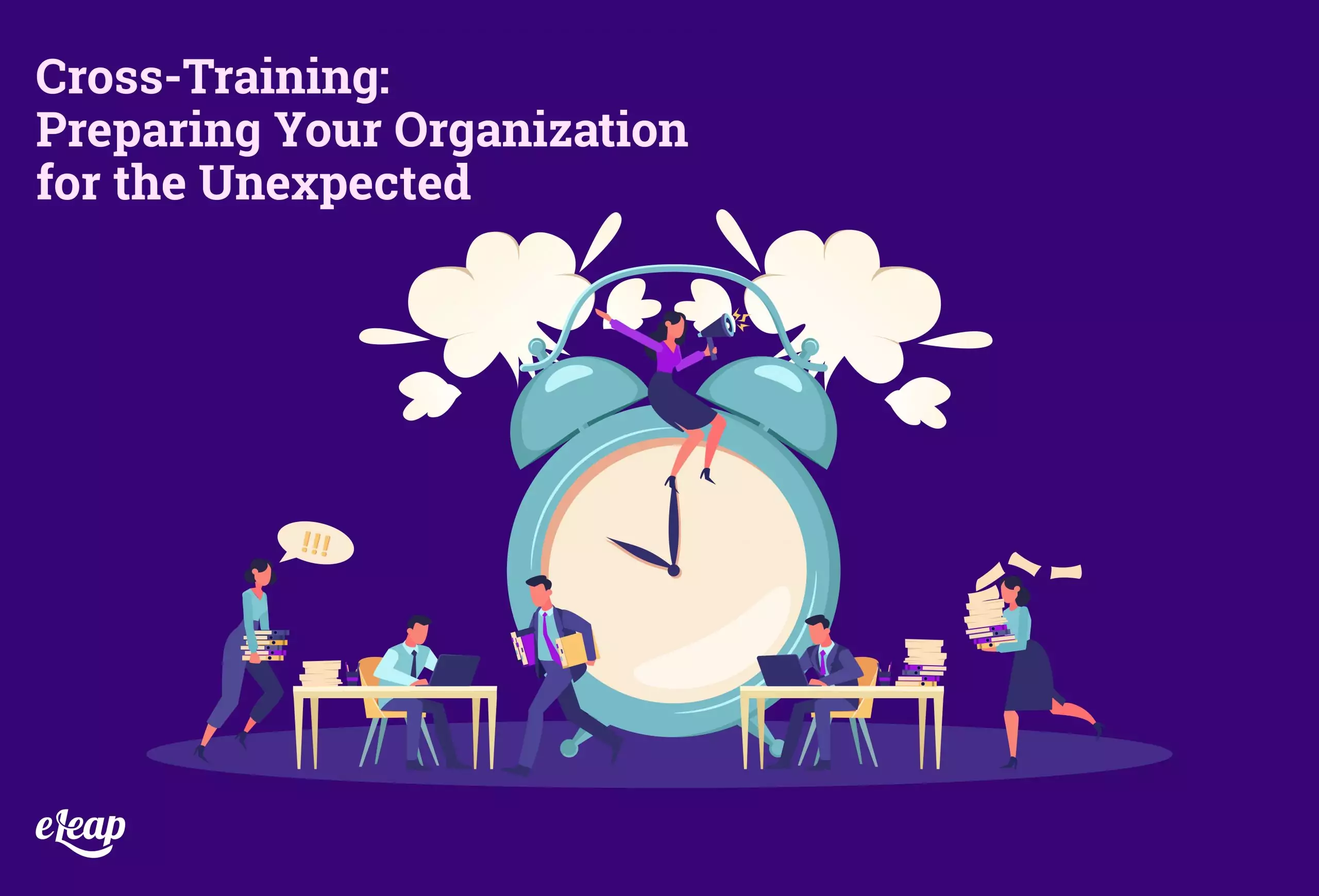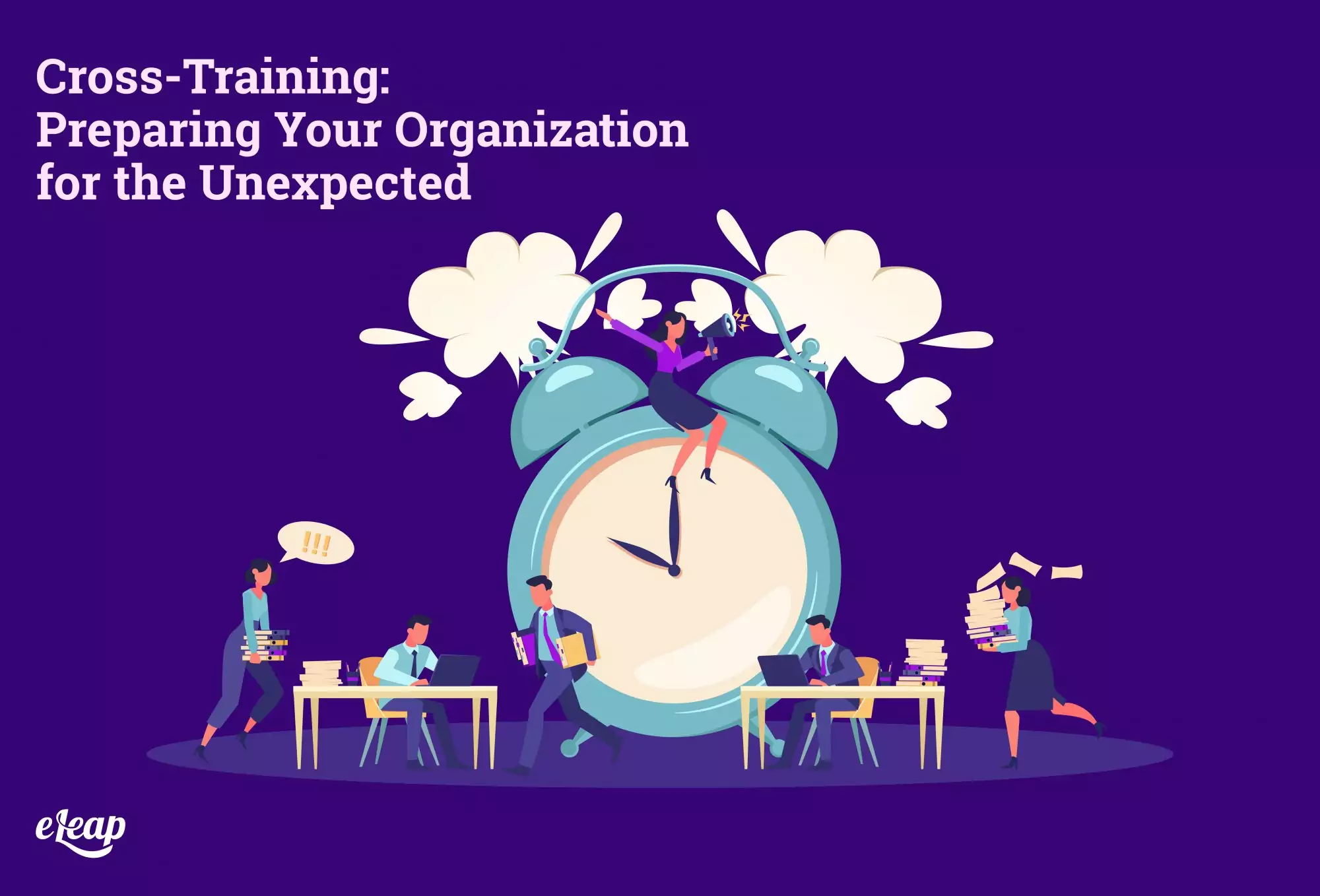Cross-Training: Preparing Your Organization for the Unexpected

When it comes to learning and development (L&D), many companies take a “less is more” approach. If yours is one that focuses primarily on ticking the boxes for regulatory compliance and ensuring professional CE is completed, you know precisely what we mean. To some extent, that is understandable, but it can be unfortunate, as it leaves your organization vulnerable.

Vulnerable to what? The unexpected. If 2020 has taught us anything, it is that predictions are often so much hot air, and things can and will change with little warning.
Dealing with the unexpected can be frustrating and challenging. Facing situations where key staff members are absent, perhaps for long periods, may leave you scrambling to find a solution, perhaps even onboarding a new employee to handle specific duties for a limited time.
The answer to this situation is simple – cross-training. Cross-training your employees helps ensure that you are prepared for the unexpected. It also helps close glaring skill gaps within your organization that might be stifling success or increasing costs.
What Is Cross-Training All About?
Cross-training is precisely what it sounds like – taking an employee who performs one function within the organization, and training them to fill other roles. For instance, you might take someone from accounting and cross-train them in sales. You could take someone from marketing and cross-train them in HR.
This idea has been around for many years and has been used primarily as a way to address challenges that arise when employees are absent from work. If your team members can fill multiple roles, it becomes possible to swap people and positions to mitigate the impact of absences. However, the benefits of cross-training go much, much deeper, and speak to your very ability to compete in the market.
At its heart, cross-training is about building resilience. It is about building the skills of all employees, which not only benefits the organization, but improves morale, strengthens your team members, and helps them forge stronger personal and professional connections, which further supports the business.
A Closer Look at the Benefits of Cross-Training
Cross-training your team can unlock a wide range of benefits for the organization, but also individual employees. Some of the most important to be aware of include the following:
- Improved Employee Retention – Turnover is a huge cost for employers, but cross-training employees can offer a more engaging, rewarding environment that bolsters retention and reduces churn and onboarding-related costs.
- Reduced Absenteeism – When employees are more engaged and feel more valued, they are less likely to be absent from their jobs. Reducing absenteeism simultaneously cuts costs while improving productivity and efficiency.
- Engagement through Rotation – While not all organizations will be able to enact a rotational plan, it can offer some interesting benefits. When employees can rotate positions, it can increase engagement and focus by providing them with a change of pace and something to look forward to.
- Employee Advancement – When you cross-train your team members, you open up a wide range of possibilities for advancement, lateral shifts, and changes in career paths. Sometimes, employees only follow a particular course because that’s what they know. When you provide them with alternatives, it becomes possible to choose a path that is more personally rewarding and therefore more engaging.
- Scheduling Flexibility – For some organizations, scheduling hinges on specific people being present to fulfill their roles and uphold their duties. When you cross-train team members, it increases flexibility and makes scheduling easier across the board.
- Promote From Within – How often have you hired from outside the company simply because you didn’t have access to employees with the right skill set? While cross-training won’t allow you to only promote from within, it does make it easier to do so by closing skill gaps. Promoting from within boosts employee loyalty and engagement, while also reducing your recruiting and onboarding costs.
- Improved Efficiency – The entire point of cross-training is that employees can learn the skills necessary for other positions. The upshot of that is that they can collaborate better, which boosts efficiency and helps foster better collaboration. It can also strengthen morale and help create a sense of community across different teams.
How to Choose Who to Cross-Train
It goes without saying that cross-training is not possible for every single position within your organization. So, it becomes important to determine what positions, and what people, are the best suited to it. How do you do that?
First, start by identifying tasks within the organization that could be successfully performed by other people. These could be high-value tasks, or they could be tasks that are often left undone when key employees are absent from work.
Next, start considering which employees will be the best suited for cross-training. Curiosity and drive are two important elements here, but there are other things you should look for, such as adaptability, flexibility, and a desire to master new skills. You might also answer a couple of basic questions, such as does the employee have any base experience in the skill, does the employee want to take on additional responsibility, and is the employee a high-performer?
Once you have an idea of which positions to cross-train for, and which employees to cross-train, your next consideration is the trainer. You must find a trainer with expertise in the skill(s) required for the position in question, but also someone well-suited to training others. Just because an employee is an expert in one area does not automatically make them a great fit for teaching.
Many organizations will find that the right learning management system is a crucial consideration here. A cloud-based system with a robust learning library like eLeaP can give you access to specific training content that will help you start cross-training even if you don’t have in-house experts to act as trainers.
Onward to Success
At eLeaP, we believe that learning and development are essential ingredients not only for employee success but for growth and stability as an organization. Our ground-breaking LMS offers the means to train employees in a wide range of roles – contact us today to learn more.